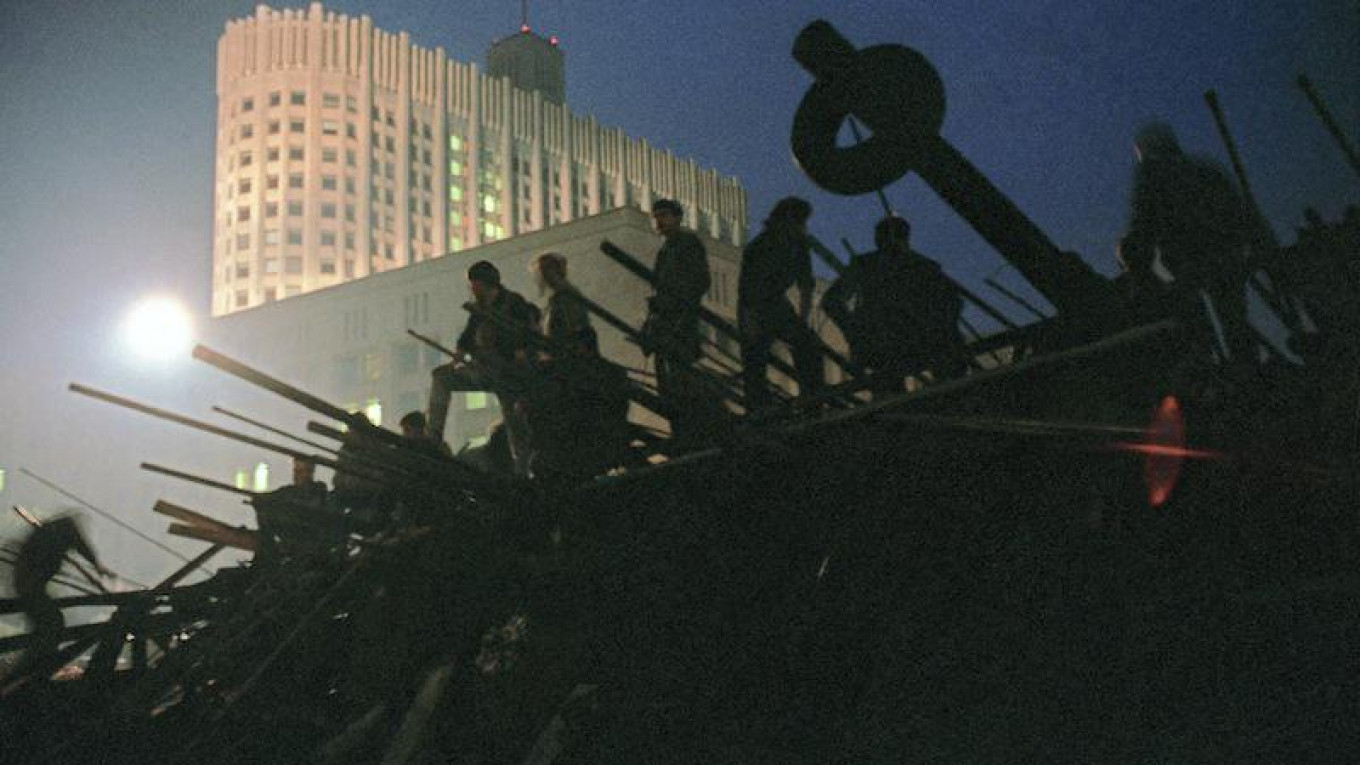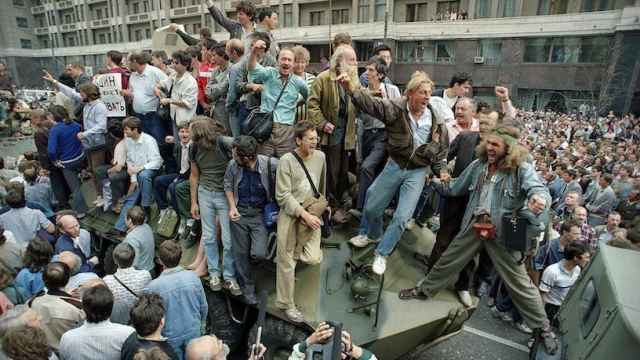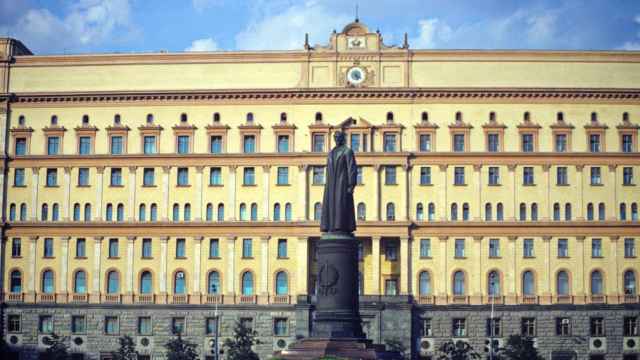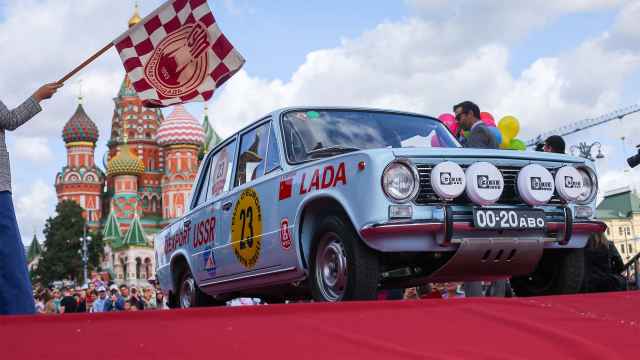It would be difficult to call the events of August 1991 a revolution. To begin with, there were no revolutionaries, only counter-revolutionaries.
The then-Soviet leader Mikhail Gorbachev had been aware for some time that a group of hardliners had been manoeuvring to remove him. Some time before September, Gorbachev had put in place plans to defend himself. He looked to reduce the influence of the Communist Party leadership. In particular, he had started talks with the leaders of the Soviet Union’s most influential republics, with a view to offering them greater powers and independence within the Union. According to Boris Yeltsin’s legal adviser, Sergei Shakhrai, the then-Russian leader actually signed the new Union agreement on Aug. 17.
Gorbachev’s talks instead forced the hand of the hardliners, and led to the coup attempt.
The conspirators had a great deal of power on their side, including the state apparatus, army, and secret services. Their plan was clear: roll back the new freedoms that Gorbachev had introduced; cease flirting with the West, restore the authority of the Communist Party; and return to the golden days before perestroika.
Twenty-five years ago, those conspirators tried to jam a stick into the wheel of change and rob Russians of their hope for a new life. The stick broke, and the wheel of change moved onward.
An Electric Appeal
Ordinary Russian citizens understood something was wrong as soon as they turned on their television sets on the morning of Aug. 19, 1991. There they saw an unscheduled broadcast of “Swan Lake,” organised by coup leaders and interrupted only by “breaking” news updates announcing that Gorbachev was “ill,” and that a new “emergency committee” was now in power.
One of Yeltsin’s advisers, the academic and deputy Yury Ryzhov, was in central Moscow that morning. He travelled to work at the Russian White House on Krasnopresnenskaya Embankment, then the seat of the Supreme Soviet parliament.
“We arrived at 9 a.m.,” Ryzhov said. “It was clear something was up. When I stopped in at Gennady Burbulis’ office, his staff said that he was at Yeltsin’s dacha in Arkhangelskoye, outside Moscow. I asked them to get Burbulis on the line, but when I got through, it was Yeltsin who picked up the receiver. He told me they were composing an appeal to the nation.”
The document’s first phrase would enter history. “The legally elected president of the country has been unlawfully suspended from his duty,” it read. It went on to describe the events as a coup attempt, and called for a national strike.
According to Gennady Burbulis, Yeltsin’s closest ally at the time, Yeltsin’s appeal was one of three crucial factors that made it possible to turn the situation around.
Sergei Shakhrai was also at Yeltsin’s dacha that day. “It was frightening,” he recalls. “There was that cutting silence of early morning and a terrible dissonance: a cloudless blue sky while some sort of problem was brewing. I wondered if I’d see my wife and kids again. When the turmoil began, it helped: we realized we had to do something, defend ourselves.”
Not knowing what lay before them, Yeltsin’s motorcade began the journey from Arkhangelskoye to the White House, issuing initial orders along the way.
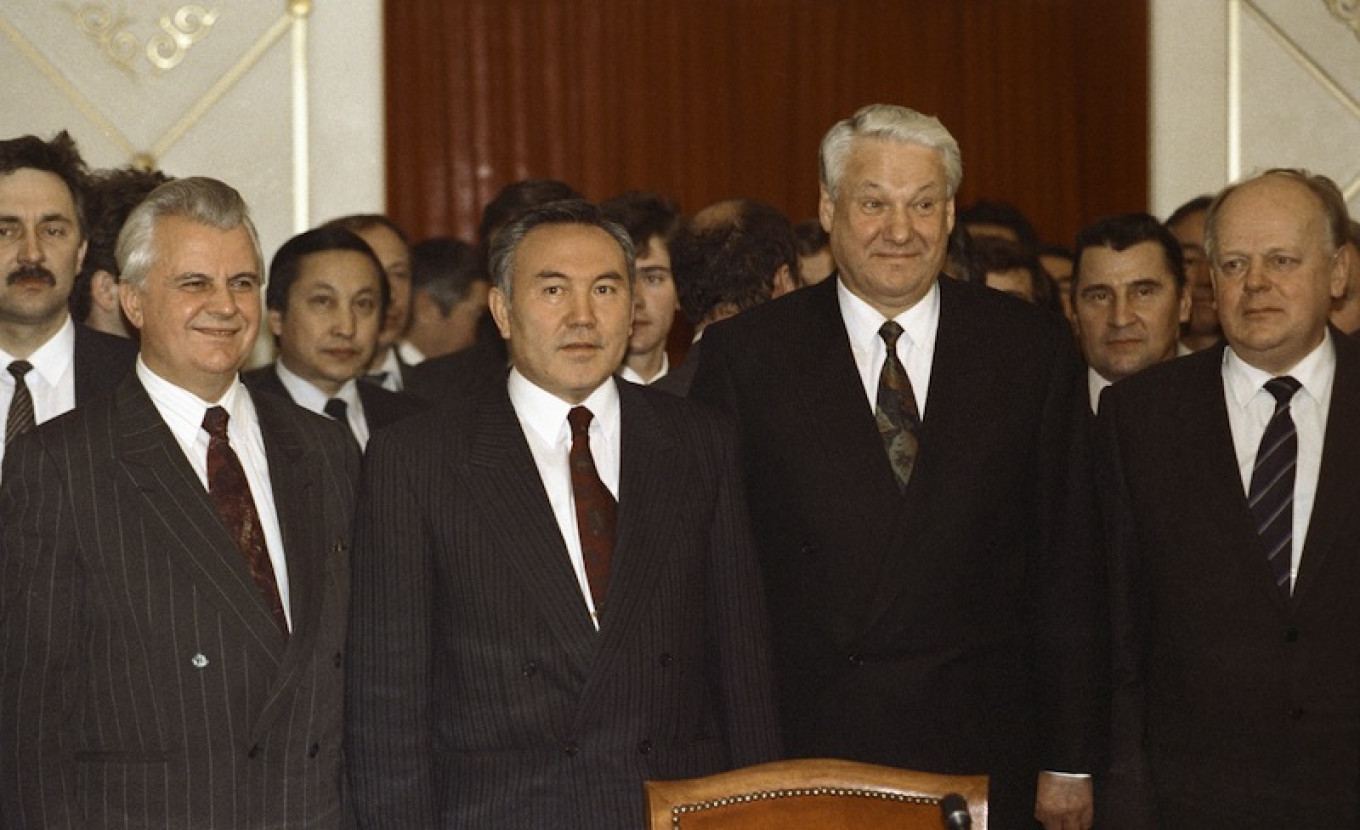
A Live Shield
“We put Yeltsin on the back seat of the ZiL car,” recalls Alexander Korzhakov. “He would not put on his bulletproof vest, so instead we surrounded him with our bodies.”
Back in 1991, Alexander Korzhakov was Yeltsin’s bodyguard. Later, he would go on to become a major political figure in his own right, most especially for his role in the subsequent 1996 presidential elections. Korzhakov was part of a hardline core that argued against them being held and was accused of attempting a coup — in a way that was reminiscent of the events of 1991.
Following the 1996 events, Yeltsin lost confidence in Korzhakov. But in 1991, the bodyguard was one of his closest companions.
“As we approached the White House, people were hauling in pieces of railroad track, chunks of iron, stones. It was clear that these people were serious,” recalls Korzhakov. “The mayor of Moscow then gave the order to have concrete barricades brought in, as if it was 1941 all over again.”
Most of the country greeted the coup with stony silence. Some provincial leaders pledged their allegiance to the Emergency Committee. Communist Party bosses in the cities sat quietly and waited.
Aside from Moscow, the only local authorities to openly oppose the coup were those in St. Petersburg. The city’s mayor Anatoly Sobchak organized a demonstration. His assistant, Vladimir Putin, was also there supporting his boss and the ideas of freedom. Later, as president of Russia, he would refer to subsequent events — the collapse of the Soviet Union— as “the greatest geopolitical disaster of the 20th century.”
In the event, Moscow was the only place that saw significant action.
“Everything that happened in 1991 happened within a radius of a few central Moscow blocks,” recalls journalist Sergei Parkhomenko. With Russia free of censorship for several years, Parkhomenko was at the vanguard of a brave new school of journalism. Today, barred from mainstream media, he runs a civil project called “Last Address,” devoted to preserving the memory of all those killed during Stalin’s terror.
Parkhomenko was joined on that day by hundreds of thousands of Muscovites. Showing bravery that took many by surprise, the civilians formed a live shield around the White House.
“The crowd shocked me most of all,” recalls Shakhrai. “They gathered very quickly. Everything fell into place, which assured us that we were doing the right thing. I know of no other rallies where people surrounded government buildings to protect them.”
The scale of that response made a deep impression on Parkhomenko. He recalled how people organized the defenses, how they assigned duties, prepared food, and brought in things they needed. “At some point a truck rolled up and unloaded photocopiers, which were an extreme rarity at the time. Another truck brought in paper,” he says. “That ensured an endless production of flyers could be disseminated through the crowd and plastered on poles around the city.
The level of civilian resistance was the second crucial factor that made it possible to reverse the situation, says Burbulis.
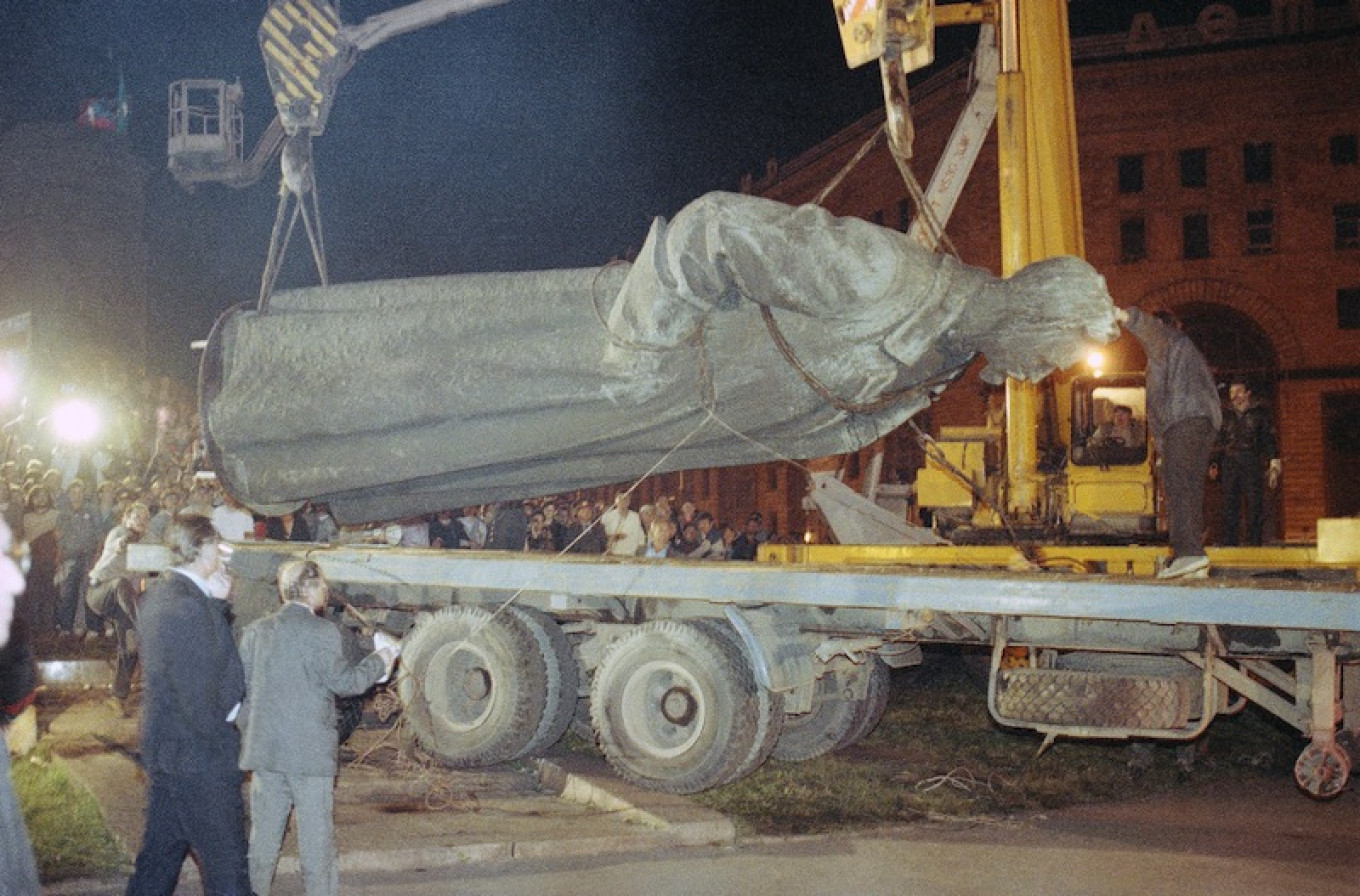
Yeltsin on the Tank
Although Yeltsin had already served for one year as president of Russia — then still part of the Soviet Union — he did not hold any real executive authority. Prior to the events of August 1991, he was simply a popular public figure and leader. Both Yeltsin and Gorbachev embodied the desire for change. Gorbachev tainted his reputation with compromises, whereas Yeltsin did not.
Yeltsin’s time came on Aug. 19, 1991. “We decided that it would be better to read the appeal not by radio, but rather from the White House steps,” Korzhakov recalled. “Then, Yeltsin noticed a tank over on the right. He said, ‘Hey, let’s take a look.’ We walked over and found a lieu- tenant who was terrified. Yeltsin said, ‘Let’s climb up.’ So we climbed up.”
Korzhakov stood near Yeltsin holding a bulletproof vest, and is clearly visible in photos of that event. At about noon on Aug. 19, 1991, Boris Yeltsin read the appeal to the people of Russia, standing on the very tank that had been deployed to fire at him. That image went down in history.
“It was a historic example of political intuition,” Burbulis said. The Yeltsin-on-tank moment was also, in his opinion, the third factor that ensured the democratic victory in 1991.
Two years later, during the constitutional crisis of October 1993, the situation would be somewhat reversed. This time, Yeltsin, already president of an independent Russia, ordered tanks to fire on rebellious hardline deputies inside the White House.
And this time, the military obeyed orders.
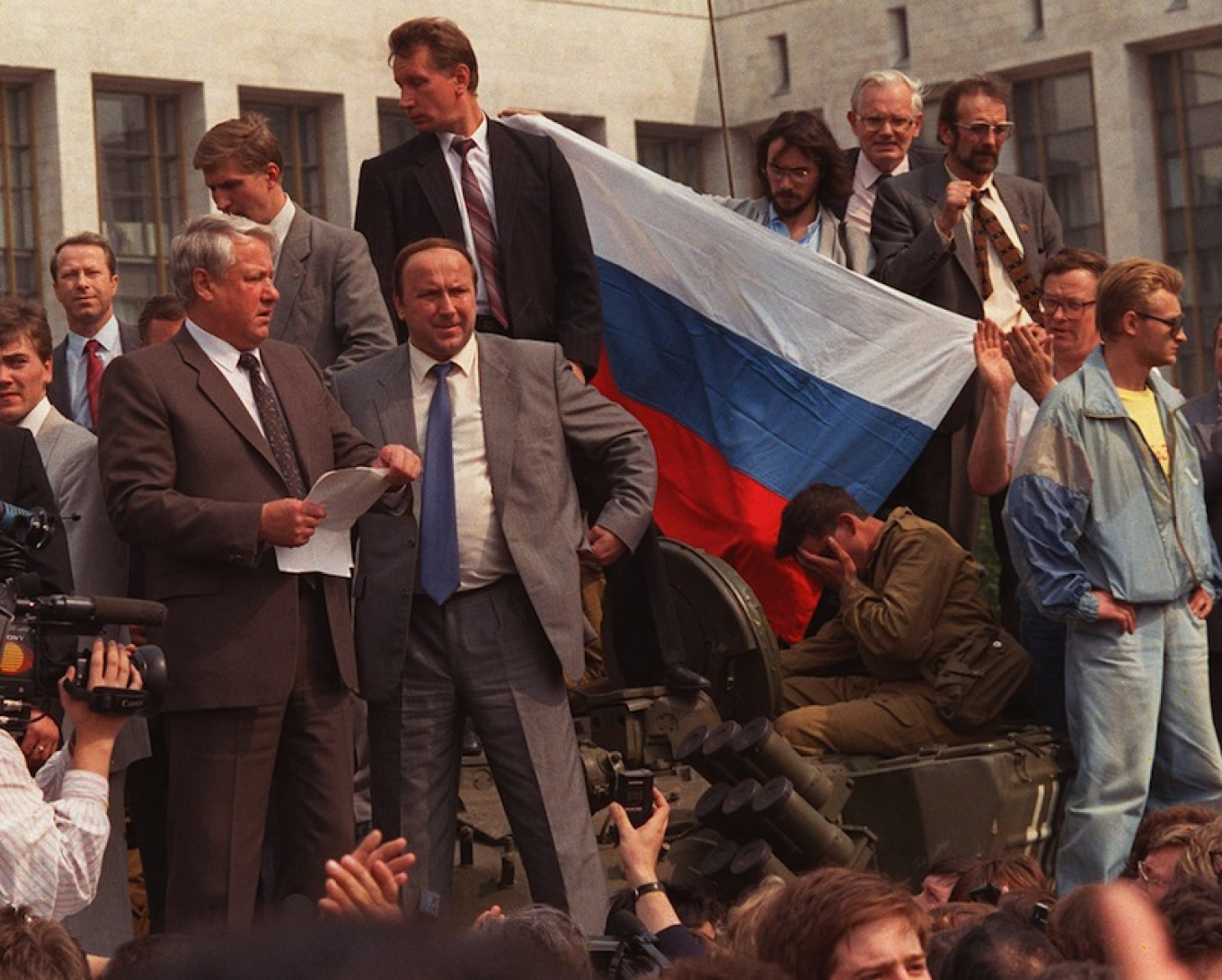
Victory
On Aug. 19, putsch leader Gennady Yanayev famously could not stop his hands from shaking when asked at a press-conference if he was taking part in a coup d’etat. The next day, army generals refused to take part in the actions, and Yeltsin declared himself commander-in-chief.
The future president descended into the White House bunker together with his associates. Shakhrai was too late to join them. “When I ran down it was already shut from inside,” he says. “I wandered for a bit through the deserted corridors, and then went out to the crowd in the street. That felt much better.”
The bunker was, it turns out, an unnecessary precaution. Late that night, one of the coup leaders, Vladimir Kryuchkov, called Yeltsin. Korzhakov, who was chatting with another bodyguard in the corridor, picked up. “He said that the decision had been made to lift martial law and to call back the tanks in the morning,” Korzhakov recalls. “It meant victory. At least, almost.”
That night, the night of Aug. 21, the civilian defenders of the White House walked through the city. It was then that the first tragedy struck. Three young men — Dmitry Komar, Vladimir Usov, and Ilya Krichevsky — died under the tracks of armored vehicles in one of the underground tunnels in the center of Moscow.
“Those deaths played a crucial role,” said Parkhomenko. “Both sides were so horrified that it brought a halt to everything.”
Later that evening, Gorbachev was brought back to Moscow, the Emergency Committee was dissolved, and the Prosecutor General ordered the arrest of the conspirators. Jubilant Muscovites toppled the monument to the infamous founder of the Cheka Soviet secret police Felix Dzerzhinsky, just across from the KGB’s head-quarters on Lubyanskaya Ploshchad.
At noon on Aug. 22, 1991, the tricolor Russian flag was hoisted over the White House for the first time. The idea of Russia as a separate state and a world power did not yet exist, but the tricolor flag soon became a national symbol of victory over the Soviet regime and the triumph of freedom.
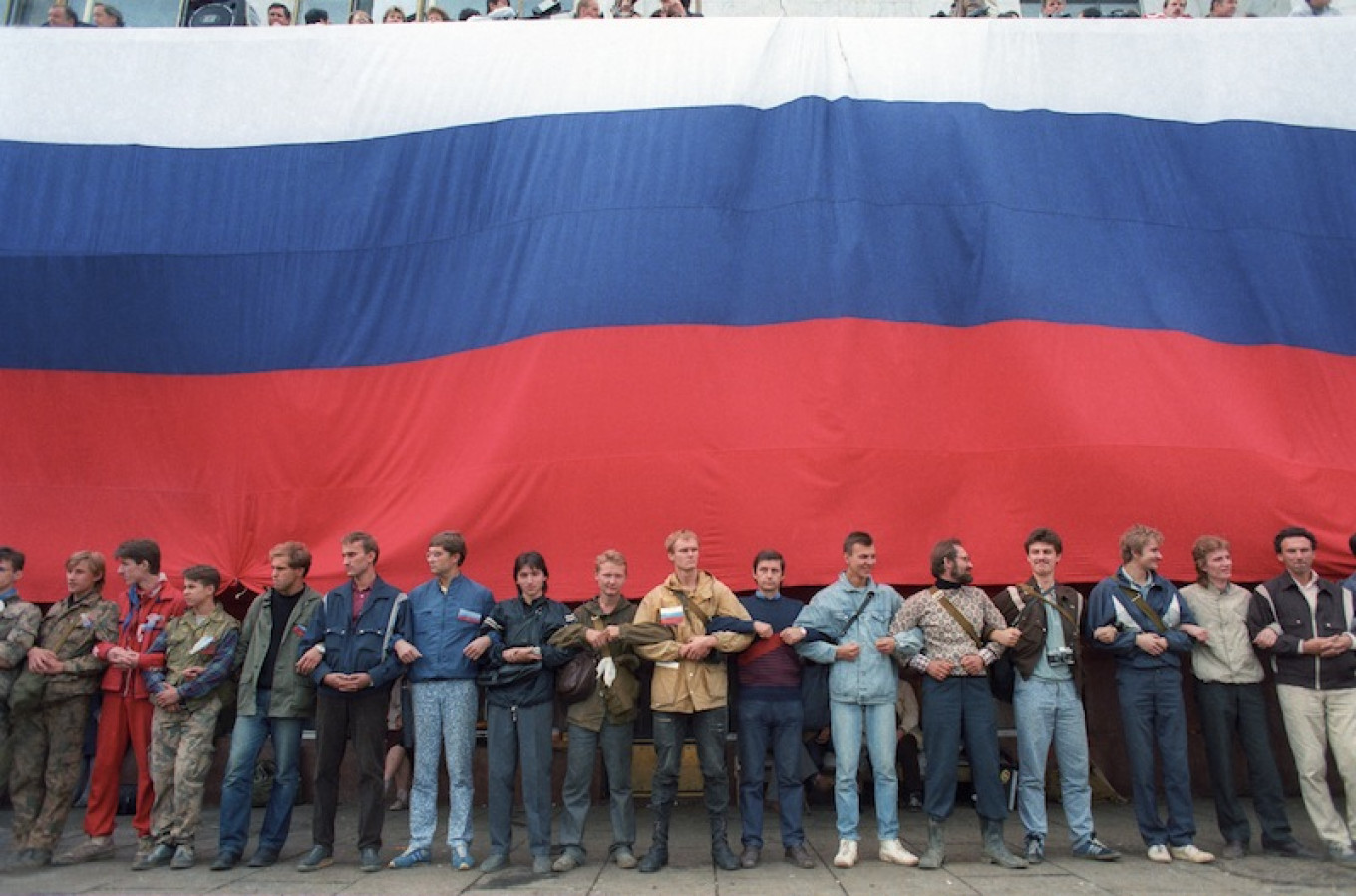
The Road Ahead
At that time, democratic reformers gave little thought to territory. Even after the failed coup, they continued considering ways to hold together what had been until only recently a totalitarian empire. “Our goal was not to build an independent Russia, but to rebuild the Soviet Union,” recalls Shakhrai.
The futility of that effort only became clear in December 1991, when all of the major Soviet republics voted for independence, and the three leading republics of Russia, Ukraine, and Belarus signed the Belavezha Accords.
But for ideas of freedom that made little difference. The new Russia would inherit the same ideas with which perestroika had begun several years earlier. “We wanted Russia’s burgeoning freedom to remain its core value, and human rights to be the of any strategic goal,” says Burbulis.
Ultimately, however, the project did not have a happy ending. The values of today’s regime are instead more reminiscent of those against which the White House defenders of the White House fought. In place of democratic ideas and human rights, Russia is once again seeing censorship, “telephone-ordered” justice in courts and jailed prisoners of conscience. The constitution, written by new Russia’s founding fathers, didn’t stop the country from falling under the rule of one single person.
Two years ago, the annexation of Crimea marked the first time that post-Soviet states’ borders had changed since the signing of the Belavezha Accords. “The empire is gone, but the imperial mind-set remains,” says Burbulis.
Today, a small monument stands above the spot in the tunnel where the three young defenders of the White House died. Most Muscovites do not even know that it exists. High school history textbooks devote only two or three sentences to the events.
The people who took part in the events of Aug. 21, 1991, thought that the road ahead was irreversible. Instead, it turned out to be an ever twisting maze.
And, quite arguably, in many respects Russia is right back where it started out 25 years ago.
But all of those who fought against the attempted coup in 1991 were full of romanticism, Parkhomenko insists. “It was a revolution of dignity,” he said.
“Even today, I should preserve that noble, romantic view of life,” says Burbulis. “Without it, each of us would lack the dignity that gives life meaning.”
A Message from The Moscow Times:
Dear readers,
We are facing unprecedented challenges. Russia's Prosecutor General's Office has designated The Moscow Times as an "undesirable" organization, criminalizing our work and putting our staff at risk of prosecution. This follows our earlier unjust labeling as a "foreign agent."
These actions are direct attempts to silence independent journalism in Russia. The authorities claim our work "discredits the decisions of the Russian leadership." We see things differently: we strive to provide accurate, unbiased reporting on Russia.
We, the journalists of The Moscow Times, refuse to be silenced. But to continue our work, we need your help.
Your support, no matter how small, makes a world of difference. If you can, please support us monthly starting from just $2. It's quick to set up, and every contribution makes a significant impact.
By supporting The Moscow Times, you're defending open, independent journalism in the face of repression. Thank you for standing with us.
Remind me later.


